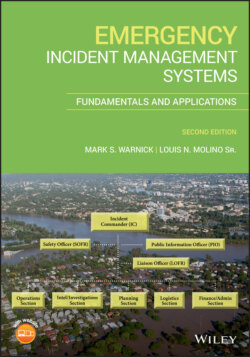Читать книгу Emergency Incident Management Systems - Mark Warnick S., Louis N. Molino Sr - Страница 69
3.5 Bangladesh
ОглавлениеThe country of Bangladesh has been extremely proactive in disaster management and incident management, much to the surprise of many. They have implemented an IMS method that closely resembles NIMS, but it uses a different name and acronym. The Mutli‐Agency Disaster Incident Management System (MADIMS) method is used widely in Bangladesh, and similar to its counterpart (NIMS), the ICS method is a key component of the system for managing incident operations.
To better understand just how comprehensive the use of the MADIMS method is, you only need to view the governments Standing Orders on Disaster ([SOD], 2010). Due to numerous disasters, Bangladesh is, and has been, active in disaster preparedness, so the use of the MADIMS method would seem to be a natural progression. The original framework was implemented in the country in 1997, and then updated in 2010. While the initial framework for disaster management (which included and their own IMS method) was implemented early on, the signing of the UN Hyogo Framework for Actions (HFA 2005–2015) inspired the government to go a step further. Based on Hyogo agreement, Bangladesh felt it was critical to update the Standing Orders on Disaster (SOD) and make sure that it was implemented in all sectors of the government, for all types of incidents (Government of the People's Republic of Bangladesh, 2010).
This update to the MADIMS method was driven by the admission of the Government of Bangladesh that their nation is vulnerable to disaster. By the government's own admission, “Bangladesh is one of the most disaster‐prone countries in the world” (Government of the People's Republic of Bangladesh, 2010, p. iii). From a historical perspective, Bangladesh has suffered cyclones, landslides, tornados, floods, and other similar disasters that have affected the economy and caused loss of life. According to the SOD (2010), the country is extremely vulnerable to climate change, and according to the SOD climate change is a serious threat for food security and the sources of revenue for their citizens.
For the most part, the ICS method used by Bangladesh mirrors the method used by the United States and many other countries. The only slight difference that was found was the reporting method: that to say who reports to whom. What is unique about the Bangladeshi plan is that it is used by every level of government, including the military. Much like the ICS method used by most countries, all incidents are local and a request for outside assistance can be requested when local resources are overwhelmed (Government of the People's Republic of Bangladesh, 2010).
In taking a closer look at the Bangladesh IMS method of MADIMS, it could be said that it is probably one of the more developed IMS methods used in the world. It clearly compares to the NIMS system used in the United States. Based on how comprehensive the MADIMS method appears to be, it could be said that a lot of time, thought, and understanding went into properly developing this method of incident management.
In looking at the IMS method of Hospital Incident Command System (HICS), Bangladesh is a country that has received training and appears to be a leader in this area. As far back as 2007, the United States Agency for International Development began providing training in a program known as Hospital Preparedness for Emergencies (HOPE). The program was a four‐day class that helped teach developing countries to understand and implement plans that assisted greater capacity to build resilience during disasters and emergencies. As a part of this training, those who attended were taught the Hospital Emergency Incident Command System (HEICS) so that they could better manage their hospital during confusing and chaotic incidents (Herbosa, 2007).
Keeping up with the changes to the IMS methods that were used, Bangladesh also received training on the new Hospital Incident Command System (HICS). In June 2014, a total of 29 healthcare workers from seven major healthcare facilities, attended a five‐day training (ADPC, 2014a). From research conducted on the use of Hospital Incident Command System (HICS) method, Bangladesh continues to not only train on this IMS method but also to widely implement it as part of the standard in healthcare facilities across this nation.
